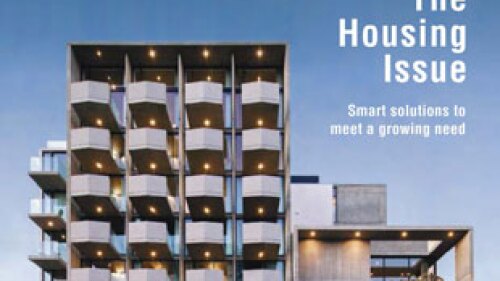Energy efficiency in existing buildings represents a potential $200 billion savings for owners and tenants. Retrofitting buildings to become more energy efficient creates U.S. construction sector jobs, enhances building value and attracts tenants. Key to this equation is financing, behavioral changes and a system to accurately measure the benefits of energy reducing measures, say a panel of industry experts on energy efficiency at the 2011 ULI Spring Council Forum.
Energy can constitute up to 25 percent of building operation costs. Reducing energy costs benefits building owners, tenants and the environment. ULI, the United States Green Building Council and Natural Resources Defense Council have been working with federal officials to develop a package of incentives to encourage energy-use reductions in existing commercial buildings through the Better Buildings Initiative (BBI). The BBI includes incentives to retrofit commercial buildings and make them more energy efficient and a publicity effort to engage top-level building industry leaders in energy-use reduction.
The BBI incentives are focused around a package of existing tax deductions for renewables, building upgrades and loan guarantees. While roundtable participants stressed the value of grants and tax credits as necessary for a successful retrofit effort, these approaches seem unlikely given the current fiscal environment says Duane Desiderio, an industry lobbyist and vice president and counsel, The Real Estate Roundtable, Washington, D.C.
The BBI publicity component is still in development. Currently, the program is forming around the idea of a Better Buildings Challenge where CEOs at the highest levels sign commitments to work on projects that would improve energy efficiency in their buildings. A goal of the challenge is to create financial industry allies who can support building owners in retrofit programs that result in energy use reductions.
Before a retrofit investment is made, it’s important to know the savings it will produce. To accurately measure and document energy savings from retrofitting, public and private efforts have been initiated. These include the Johnson Controls Institute for Building Efficiency, ULI and other partners’ energy efficiency surveys, the Greenprint Carbon Index and CBECS (Commercial Buildings Energy Consumption Survey).
The Johnson Controls/ULI energy efficiency survey, presented by Kelly Smith, Director of Research for the Institute of Building Safety, found that almost 91 percent of all the 857 European survey respondents reported adopting at least one of 52 energy management measures listed in the survey. The most popular cost reduction actions were changes to lighting and controls. The survey also found that the main barriers to energy efficiency retrofit are similar to those reported in the U.S.: lack of internal capital, difficulty obtaining external financing and lack of government incentives. Noting that the top ways of paying for projects were internal financing, grants, and power purchase agreements, Mr. Smith pointed out that as these resources are exhausted, there will be a growing need for external financing. Additionally, those respondents reporting using internal budgets mostly relied on behavioral changes to accomplish energy savings.
Kenneth Hubbard, executive vice president, Hines described the Greenprint Carbon Index, developed and implemented by the Greenprint Foundation. Greenprint Carbon Index is one of the largest global measurements of real estate’s carbon footprint. The index includes data from 36 countries and represents 176 million square feet (16 million square meters) of office, industrial, retail, multi-family and hotel properties containing 35,000 tenants. The first index was completed last year, and Mr. Hubbard says a second index, that may be twice as large as the first, is currently in process.
A third measurement tool is the Commercial Buildings Energy Consumption Survey (CBECS). The most recent (2007) update of this data base was flawed, and the most recent data set is from 2003. The industry recognizes that more recent data is necessary and private sector entities engaged in the BBI recently sent a letter to the current administration encouraging them to allocate funds necessary to move CBECS forward.
In addition to retrofit incentives and outcome documentation, energy savings are also realized through behavioral changes. In describing the UK approach to energy-use reduction, Alexandra Notay, VP, Strategic Programs, ULI Europe described the Primary Care Trust year-long program resulting in £650 energy cost savings from changes such as load shedders and turning off computer screens. Besides encouraging changes in behavior, Ms. Notay described the UK Green Deal policies to reduce energy consumption. These include Energy Performance certifications (EPCs are a one-time assessment of a buildings’ energy performance necessary for commercial or residential occupancy) and a Green Infrastructure Bank with £3 million to incentivize green building programs.
In addition to lowering costs, there is also private-sector momentum to create building valuation changes that will help building owners realize the value of retrofit at resale and refinance. These include efforts to determine if buildings with energy-efficiency labels (such as Energy Star) have higher occupancy rates or other attributes that add to long term value in a manner that can be reflected in building appraisals.



